Mathematical Analysis of Artificial Cranial Deformation
© Stephen Plowright
Drug Referral and Information Centre, Canberra.
Introduction
This method was designed by S. Plowright (1992) to be used by L. Martin
in her paper investigating methods of extracting evidence of artificial
deformation in the Australian Pleistocene cranial population (Martin, 1992).
Martin's paper was inspired by work published by P. Brown (Brown, 1981),
and was presented at the 1992 Conference of the Australasian Society for
Human Biology. Martin used this method to complement other methods, and
found evidence supporting Brown's assessment that artificial deformation
was most likely present in the Australian Pleistocene cranial population.
This method was designed to quantify those features which are most easily
observed as indicating induced deformity, ie. the curvature and symmetry
of the cranial midline. It produces a number or index which reflects the
degree of deformity and is easily extracted and calculated from any lateral
photograph of a cranium.
Method
The Frankfurt plane was calculated for use as a baseline. This baseline
was then divided into ten equal parts, providing nine points from which
to measure, giving measurements a 1, a 2, a 3, ...a
9 (a 0 and a 10 will always have values of 0). Lines were
drawn perpendicular to the baseline to intersect with the top of the cranium,
thereby constructing a plot of the cranial midline. Distances from the baseline
to the midline were measured in units of one tenth of the baseline length
thus eliminating the problem of variation in size and photographic scaling.
Point 0 is at the front of the cranium and point 10 at the back.
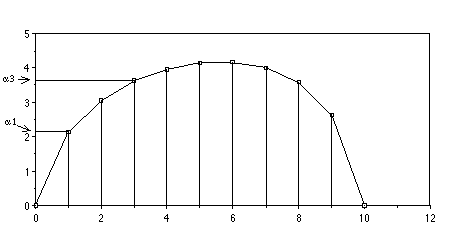
Figure 1. Midline heights in 1/10 th baseline units.
From these nine measurements, information about curvature and symmetry were
calculated. The curvature at each point was estimated by calculating the
difference in angle between the lines connecting that point to the previous
and next points (Figure 2).
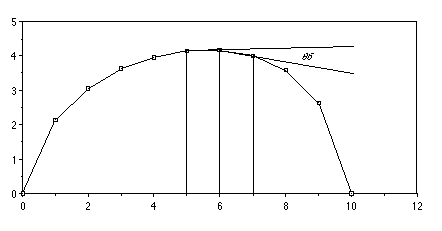
Figure 2. Estimate of curvature at point 6 in radians per unit.


for example

Deformed crania were observed to exhibit areas of low curvature at varying
points, as well as a tendency to have increased curvature toward the back.
One indicator of the deformity, therefore, was the difference in curvature
between the lower values and the curvature toward the back. The most stable
and reliable measurement was obtained by subtracting the average of the
lowest four values from the average of the three hindmost values (Theta
7, 8, 9 ). This averaging across the cranial surface was necessary to prevent
excessive sensitivity to normal lumps.
The resulting figure was then multiplied by a symmetry component, k
, to reflect overall symmetry (Figure 3). The symmetry component was calculated
by taking the ratio of the differences of the height toward the front and
toward the back, from half the height at the mid point (a 5 ). For
convenience, the calculation was multiplied by 10 to produce values ranging
approximately between 2 and 20, which many people find easier to remember
and compare.

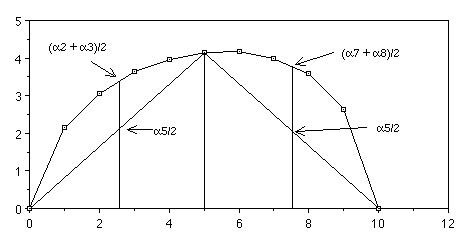
Figure 3. The symmetry component.
The index is then calculated.

Where theta (a, b, c, d) are the four lowest curvatures. Examples
of midline curve and index are shown in figures 4 and 5.
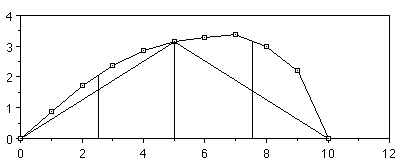
Figure 4. Plot of severely deformed Vanuatu cranium: I = 13.84
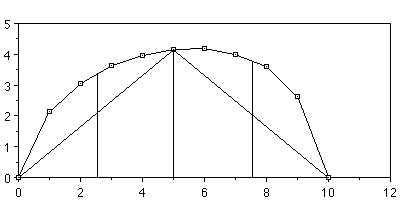
Figure 5. Plot of non-deformed Vanuatu Cranium: I = 4.48
Results
A sample of 15 crania from the Coobool Creek population were sorted visually
by Martin into two groups; deformed and non-deformed. The index was then
calculated for each cranium and the two groups were tested statistically
for a difference in the index. In table 1, specimens judged deformed by
Martin are marked M, those judged by Brown as deformed are marked
B.
Table 1.
Specimen Index
CC1
CC9
CC12
CC13
CC16
CC28
CC29
CC37
CC41
CC45
CC46
CC49
CC65
CC66
CC71 |
6.28
3.18
5.38
4.19
3.97
3.00
3.03
3.57
5.58
3.30
4.01
4.21
8.75
6.46
4.12 |
BM
M
M
BM
BM
BM
BM
|
The agreement between Brown's assessment and Martin's visual sort is quite
good. Martin's main criterion for judgement was the shape of the cranial
vault. Both researchers have chosen specimens of index 4.19 or greater.
One would expect the mean index of non-deformed specimens to vary slightly
between different populations to reflect genetic differences affecting the
midline curve.
Statistical Test of Hypotheses
H0 : There is no difference in index between the groups.
H1 : The mean index for crania in the deformed group is significantly
higher than that for crania in the non-deformed group.
A one-tailed t-test was performed and the following results were obtained.
Table 2.

Even with the small sample, it can be seen that the index is significantly
larger in the group of visibly deformed crania. The probability that H0
is true is 0.0012. The result is significant at the 99% level. This indicates
that the index does reflect deformity/non-deformity as determined visually.
A sample from a different population (Vanuatu) of deformed crania were sorted
visually by Martin into two groups; mildly deformed and severely deformed.
They were then tested. The following result was obtained.
Table 3.

It can be seen from this that the more deformed crania had a significantly
higher mean index than the less deformed crania. It is significant at the
99% level.
Discussion
The index produced by this method was found to discriminate quite well between
deformed and non-deformed specimens. It was also found to agree well with
the degree of deformity as determined visually. Martin found the method
to be of use in assessing the likelihood of artificial deformation in the
Australian Pleistocene cranial population (Martin, 1992).
Further studies need to be done to fully assess the value of this method.
To assist those interested in such work, I have developed software for the
Macintosh to perform the calculations and manage the resulting data. This
software is available free of charge, contact Dr Colin Groves, Anthropology,
ANU, or e-mail s.plowright@nepean.uws.edu.au.
Acknowledgements
Letresha Martin, for the inspiration, collaboration, and friendship.
Dr Colin Groves, for kind advice and support.
References
BROWN, P. (1981) Artificial Cranial Deformation: a component in the variation
in Pleistocene Australian Aboriginal crania AO 16:156-167
MARTIN, L. (1992) Two Methodologies of Artificial Cranial Deformation Analysis.
Presented at the Conference of the Australasian Society for Human Biology.
To be published.
First published by the Australasian Society for Human Biology.
Other Papers
Page Authored by MacKaos
Consulting.